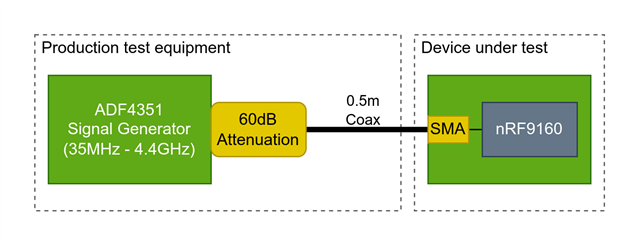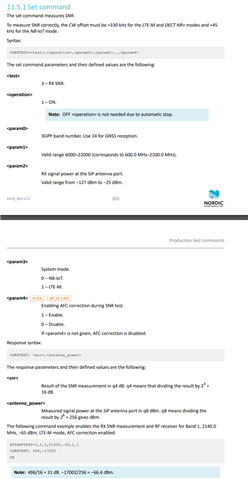Hi,
We're preparing for production testing a customer board with the nRF9160 and have arrived at the following setup at the factory:

We instruct the signal generator to generate frequencies for bands 20 and 3 (805 MHz and 1840 MHz). Then we run the following:
rtt_shell.send_raw(f"at AT%XRFTEST=3,1,{band},{freq * 10},-61,1,1\r\n")
resp = rtt_shell.wait_for(r"%XRFTEST:.*\r\n", timeout=3.0)
(yhis is using modem firmware v1.3.5 if that affects anything)
Following the examples from the AT command manual, we're expecting somewhat the same results, but what happens is that
- we ALWAYS get *NEGATIVE* SNR
- Power matches our expectation (-60 ish) using a good quality coax cable, but then I tried routing the signal through a SMA connector hand-soldered to a coax and this made power increase according to XRFTEST. Pretty weird...
One thing I tried was adding a 330 kHz offset to the generated frequency, which actually improved SNR a lot, but not enough to make it non-negative (-28 on band 3, -13 on band 20 in the end). Further increasing offset only made it worse again.
The documentation is perhaps not 100% clear here. We are not sure how to interpret these weird results or what to do about them. Any clarifications and possibly a complete description on how one would setup a signal generator + XRFTEST based RF test setup would be extremely apprecated...


